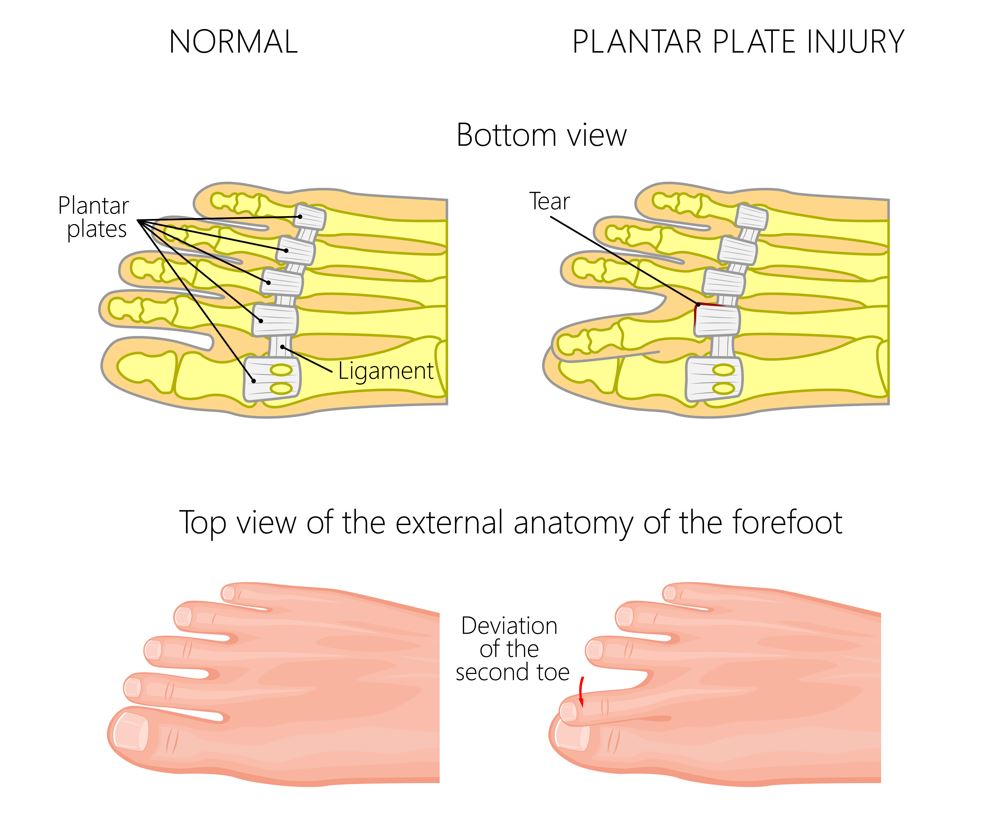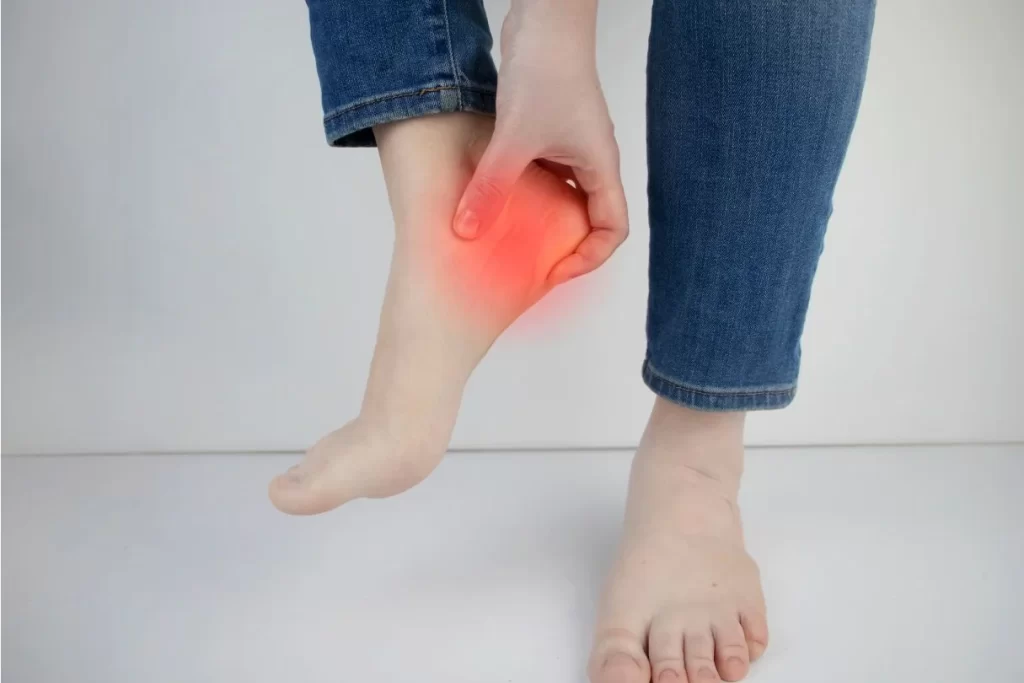Causes of Plantar Plate Injury
Plantar plate injury occurs when there is a tear or thickening of the plantar plate, causing pain when pressure is applied. There are 3 typical causes of plantar plate injury – acute trauma, biomechanical factors and chronic degeneration
Acute trauma is incidents that result in either sudden traction (pulling) or direct impact on the plantar plate:
- Fall from height or hard landing from jumps
- High-impact barefoot training
- Stubbing the toe
- Hyperextending the toe
Biomechanical factors are structural issues that cause the overloading of pressure on the plantar plate:
- Excessive pronation
- Prominent metatarsal heads
- Long second metatarsal bone
- Short first metatarsal bone
- Malfunctional first toe joint
Chronic degeneration is related to the ageing process, often associated with arthritis of the toe joint.
Need Help? See Our Podiatrist Today
Risk Factors of Plantar Plate Injury
Risk factors of plantar plate injury include:
- High-impact sports athletes
- Long distance runners
- Barefoot training enthusiasts
- Flat feet (pes planus) or high arch feet (pes cavus)
- Bunions
- Clawed or hammer toes
- Corns or calluses at the ball of the foot
- Shorter first toe compared to second
- Fat pad atrophy

Signs and Symptoms of Plantar Plate Injury
Signs and symptoms of plantar plate injury include:
- Sharp or aching pain, “stepping on pebble” sensation
- Swelling at the ball of the ball
- “V” shape sign (Churchill sign), commonly between the second and third toe
- “Floating” toe (retracted)
Plantar Plate Injury Management in Singapore
Management for plantar plate injury aims to alleviate pain and inflammation of the plantar plate and address the factors causing the damage.
Management options for plantar plate injury in Singapore include:
- Rest and ice if swelling is present
- Footwear change
- Avoid barefoot walking or training
- Taping
- Customised foot orthoses to reduce pressure
- Extracorporeal shockwave therapy to stimulate blood flow to the area and allow recovery
- Magnetotransudction therapy to relieve pain and inflammation
- Surgery is typically only required if cases are severe
Search
You May Also Like
Do You Have A Question? Ask Us...
Search
Do You Have A Question? Ask Us...
You May Also like
Categories
Categories
- Ankle (4)
- Diabetic Foot (7)
- Feet (5)
- Knee (5)
- Paediatric Lower (5)
- Soft Tissue (3)
- Uncategorized (60)




